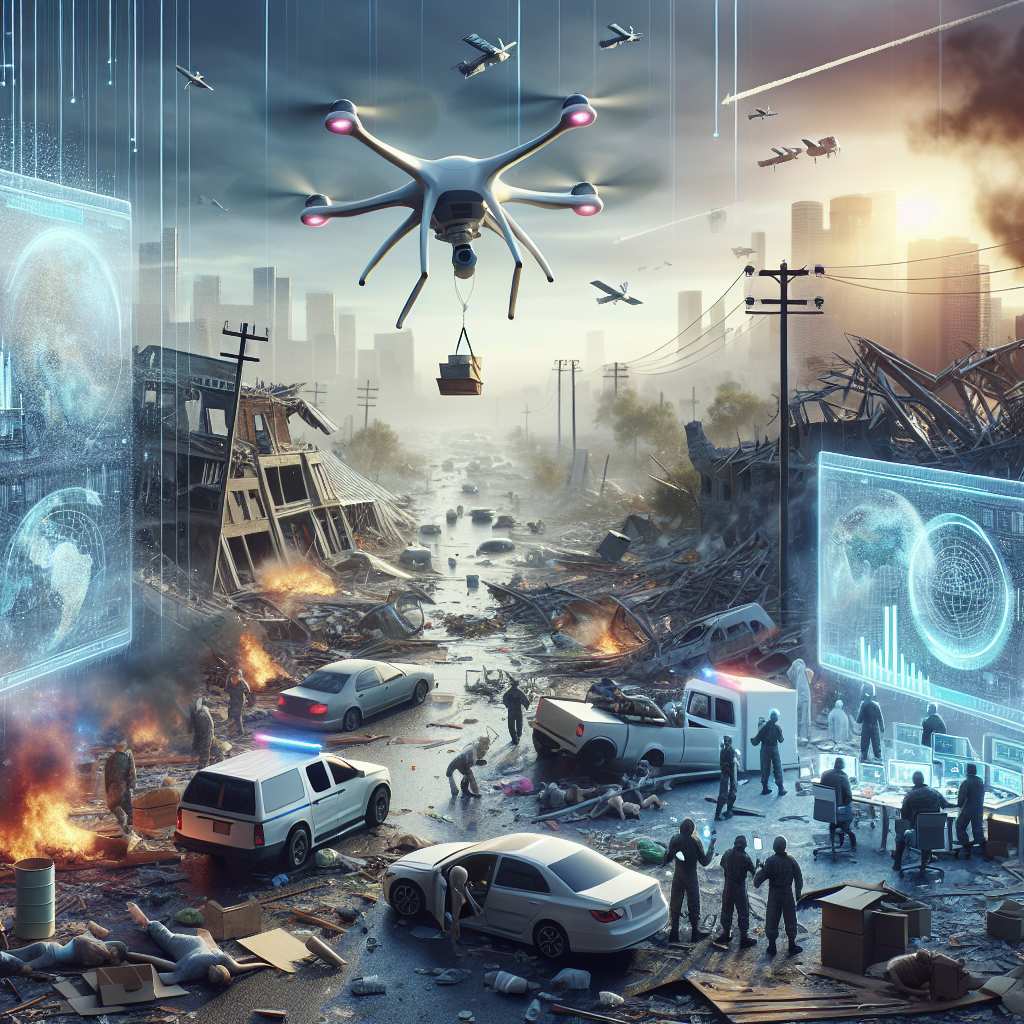In recent years, natural disasters have become more frequent and severe, posing significant challenges for governments around the world. From hurricanes and wildfires to floods and earthquakes, these events can have devastating impacts on communities, infrastructure, and the economy. In the face of such disasters, governments are turning to artificial intelligence (AI) to enhance their response and recovery efforts.
AI has the potential to revolutionize disaster response and recovery by providing governments with the tools they need to make faster, more informed decisions. From predicting the path of a hurricane to analyzing satellite imagery to assess damage, AI can help governments better prepare for, respond to, and recover from disasters. In this article, we will explore how AI is being used to enhance government disaster response and recovery efforts and the benefits it brings.
1. Predicting and Monitoring Disasters
One of the key ways AI is enhancing government disaster response efforts is through its ability to predict and monitor disasters. AI algorithms can analyze vast amounts of data, such as weather patterns, satellite imagery, and social media posts, to forecast the path and intensity of a hurricane, wildfire, or other natural disaster. By predicting the timing and impact of these events, governments can better prepare and mobilize resources to respond effectively.
For example, the Federal Emergency Management Agency (FEMA) in the United States has been using AI to improve its disaster response efforts. By analyzing historical data on hurricanes and other natural disasters, FEMA can predict the likelihood of future events and allocate resources accordingly. This proactive approach allows FEMA to pre-position supplies, evacuate at-risk populations, and coordinate emergency response efforts more effectively.
2. Assessing Damage and Prioritizing Recovery Efforts
In the aftermath of a disaster, AI can help governments assess damage and prioritize recovery efforts. By analyzing satellite imagery and other data sources, AI algorithms can quickly identify areas that have been most severely impacted and need immediate attention. This information can help governments allocate resources, such as search and rescue teams, medical supplies, and infrastructure repairs, to the areas that need them most.
For example, after Hurricane Harvey hit Texas in 2017, the Texas A&M University’s Center for Robot-Assisted Search and Rescue deployed drones equipped with AI algorithms to assess damage and locate survivors. By analyzing the data collected by the drones, emergency responders were able to prioritize their search and rescue efforts, ultimately saving lives and reducing the impact of the disaster.
3. Improving Communication and Coordination
Another way AI is enhancing government disaster response efforts is by improving communication and coordination among agencies and organizations involved in the response. During a disaster, multiple agencies, such as FEMA, the Red Cross, and local emergency services, must work together to coordinate rescue and relief efforts. AI can help streamline this process by providing real-time data and analytics that enable agencies to make more informed decisions and coordinate their actions more effectively.
For example, during the 2018 California wildfires, AI-powered chatbots were used to provide residents with real-time updates on evacuation orders, road closures, and shelter locations. By automating the dissemination of this information, emergency responders were able to focus on more critical tasks, such as firefighting and rescue operations. This improved communication and coordination ultimately led to a more efficient and effective response to the wildfires.
4. Enhancing Public Safety and Preparedness
AI is also being used to enhance public safety and preparedness for disasters. By analyzing social media posts, news reports, and other data sources, AI algorithms can identify emerging threats and trends that may impact public safety. Governments can use this information to issue timely warnings, evacuation orders, and safety tips to the public, helping to minimize the impact of disasters on communities.
For example, during the COVID-19 pandemic, AI was used to track the spread of the virus and identify areas with high infection rates. This information was used to inform public health officials and policymakers about the need for additional resources, such as testing sites and medical supplies, in those areas. By leveraging AI to enhance public safety and preparedness, governments can better protect their citizens and minimize the impact of disasters on society.
FAQs
Q: How is AI being used to predict natural disasters?
A: AI algorithms can analyze vast amounts of data, such as weather patterns, satellite imagery, and social media posts, to forecast the path and intensity of natural disasters. By predicting the timing and impact of these events, governments can better prepare and mobilize resources to respond effectively.
Q: How can AI help governments assess damage and prioritize recovery efforts after a disaster?
A: By analyzing satellite imagery and other data sources, AI algorithms can quickly identify areas that have been most severely impacted and need immediate attention. This information can help governments allocate resources, such as search and rescue teams, medical supplies, and infrastructure repairs, to the areas that need them most.
Q: How does AI improve communication and coordination among agencies during a disaster?
A: AI can provide real-time data and analytics that enable agencies to make more informed decisions and coordinate their actions more effectively. By automating the dissemination of information, AI helps streamline communication and coordination among agencies involved in disaster response efforts.
Q: How can AI enhance public safety and preparedness for disasters?
A: By analyzing social media posts, news reports, and other data sources, AI algorithms can identify emerging threats and trends that may impact public safety. Governments can use this information to issue timely warnings, evacuation orders, and safety tips to the public, helping to minimize the impact of disasters on communities.

